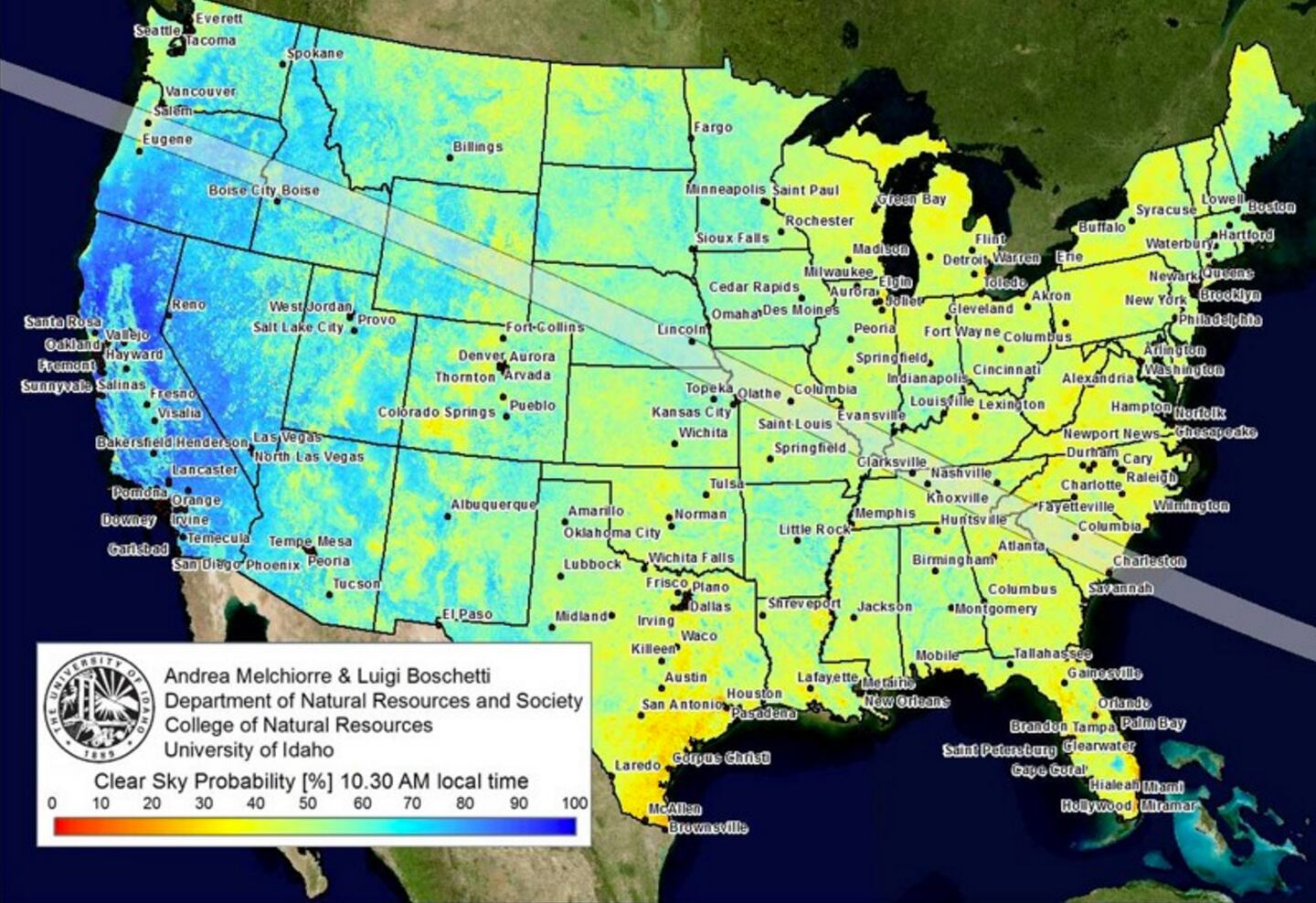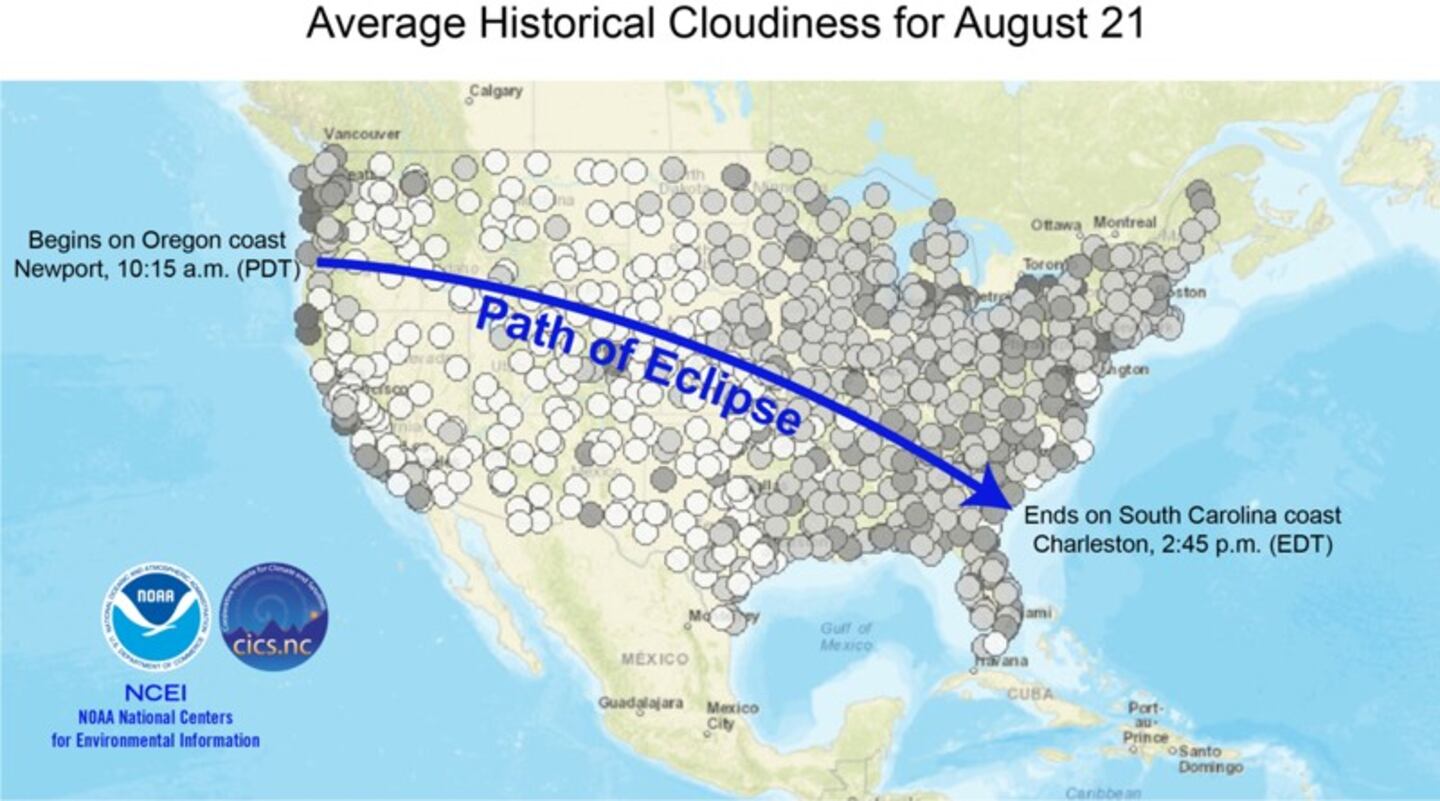Millions of Americans are counting down the days until August's rare total solar eclipse, the first to cross the nation coast to coast in nearly 100 years.
While there are a variety of excellent viewpoints for you to catch the celestial event in all its glory, it all comes down to where you'll find the clearest skies on Monday, Aug. 21, according to GreatAmericanEclipse.com.
Thankfully, researchers at the University of Idaho created a weather map based on historical data showing where you're most likely to experience completely clear skies.
The team at the university's College of Natural Resources collected 16 years worth of daily satellite observations from the NASA Terra Satellite's MODIS sensor and used multiple NASA data sets to develop the Clear Sky Probability Map.
"There have been many maps created to document the path of the eclipse through the United States and the world," associate professor Luigi Boschetti said on the university website. "However, this map is unique because we have added information on the probability of clear skies – meaning how well you will actually be able to see the eclipse from where you are located in the U.S."
Based on historical data, the western United States (mostly colored in blue hues) has the highest chance of experiencing clear skies.
» RELATED: 7 things to know about the rare total solar eclipse crossing the nation this August
However, as the eclipse travels east, viewing conditions will get worse.
One map, developed by the National Oceanic and Atmospheric Administration, shows predicted cloudiness on the day of the eclipse based on historical data, the Washington Post reported.
» RELATED: This is the most accurate map of the Great American Eclipse’s path of totality to date
NOAA researchers relied on 10 years of data collected from ground observations instead of satellite data to create the Average Historical Cloudiness map for Aug. 21.
While the University of Idaho's map shows the likeliness of having totally clear skies on Aug. 21, NOAA's map indicates the average percentage of cloudiness in each area.
NOAA researchers found coastal regions and areas east of the Mississippi River may be more susceptible to cloudier conditions on Aug. 21 compared to other areas.
They identified Rexburg, Idaho; Casper, Wyoming; Lincoln, Nebraska; and Carbondale, Illinois, as areas that historically experience clear skies during that time.
Explore the map and interactive tool at ncei.noaa.gov.
Cox Media Group







